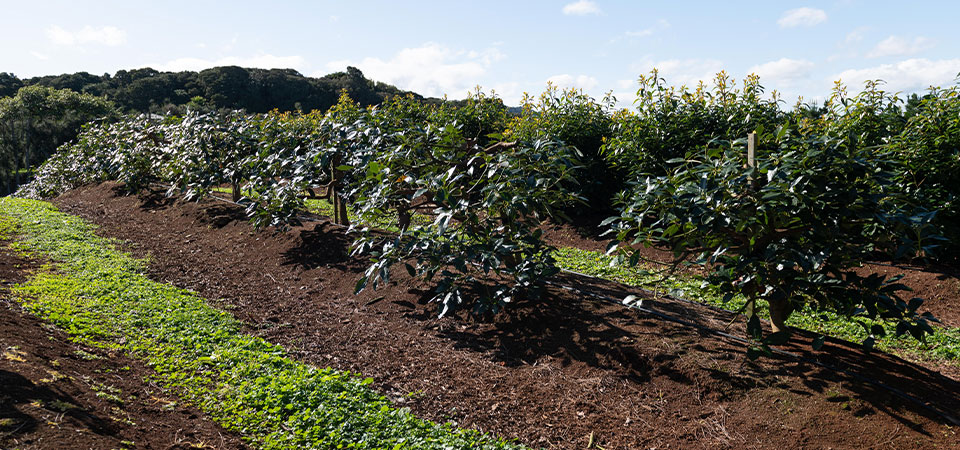There are several advantages to humping and hollowing including:
- Creating a zone where the water drains quickly from the hump to the hollow. This prevents drowning and creates a highly oxygenated area in which avocados thrive.
- Doubling the volume of A horizon soils (top soil) in which trees are planted. These soils have better structure, more organic matter and a richer soil biome.
- Freeing up the soils to make root penetration easier. Humps are also warmer than surrounding soils which promotes root growth.
- Ensuring all traffic movement happens in the hollow. This means there is no compaction happening on the humps.
At Lynwood we routinely plant all our trees on humps. The depth of the hump depends on the moisture pressure a tree may be under. Our humps range from 200 mm in height where the drainage is excellent and there is no possibility of ponding, through to 800 mm, where much ponding occurs. We make our humps the same width as the planting space between trees within a row. For example, if the planting spacings were 5 m between rows and 3 m between trees, we would make our humps 3 m wide. It is important to make sure the hump has a flatish top to stock the soil eroding away from the tree roots.
When humping and hollowing we are trying to set up our orchards to withstand a one in twenty-year rain event. We see much humping and hollowing used as a technique around the avocado world and consider New Zealand probably needs it more than most.

